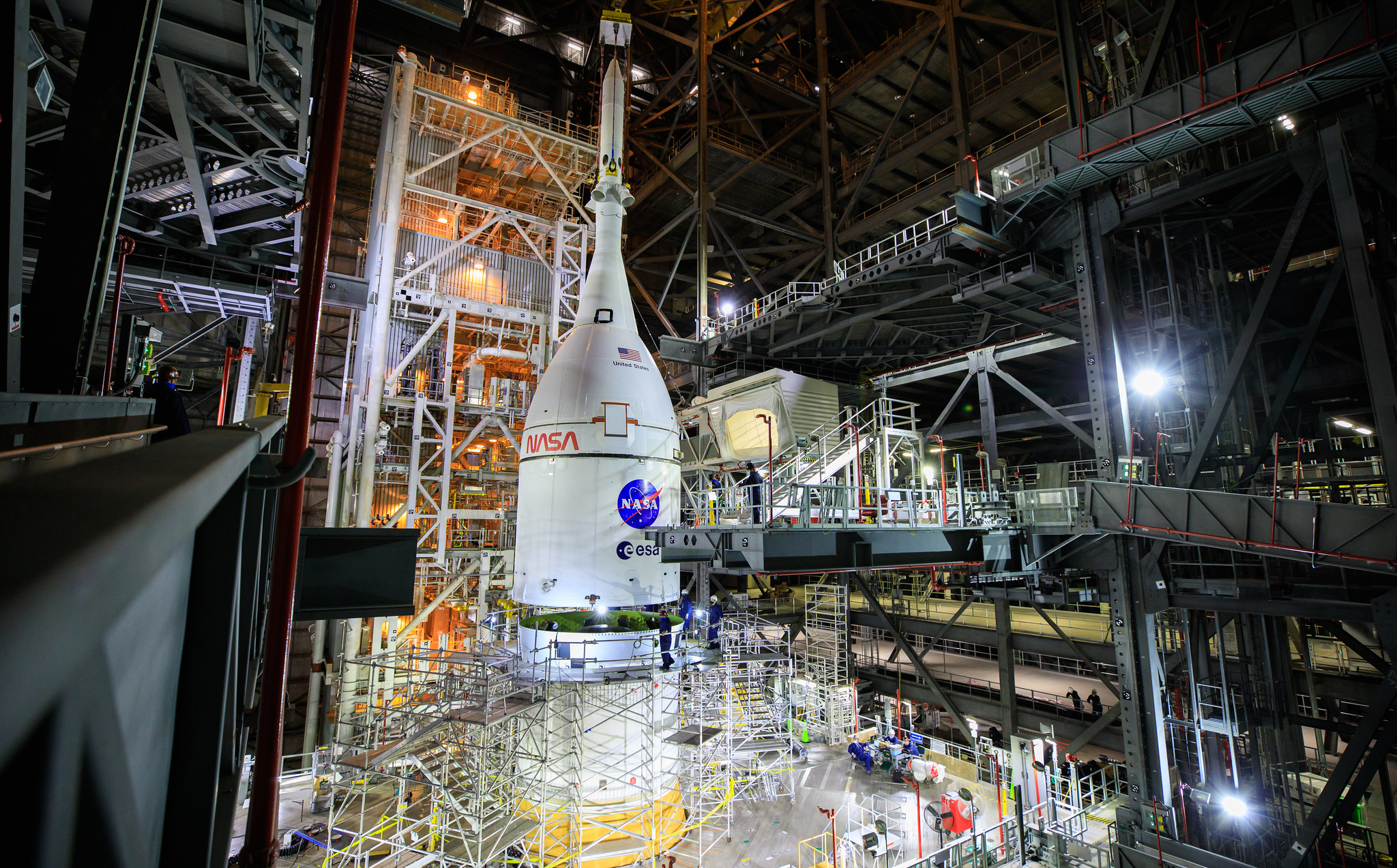
NASA’s Artemis 1 confirms the launching of its first moon mission after facing cancelations, Congressional hearings, COVID-19, and other technical delays.
NASA’s decades-long push is to have a launch slated in late August or early September at its Kennedy Space Center on Florida’s east coast.
The Artemis program is a human spaceflight intended to explore the moon, aiming for its first touchdown on the lunar south pole by 2024.
Artemis will put itself into the moon’s orbit and then return to Earth. On top of being the first entry in NASA’s newest spaceflight program, it’s an important test of the long-awaited Space Launch System (SLS)—a heavy-lifter of a rocket comparable to the old Saturn V—and the Orion command module that will one day house astronauts.
According to Cliff Lanham, an operations manager at NASA’s Kennedy Space Center on Florida’s east coast, preparations are almost complete.
“The team is beyond excited,” he said. “We still have a few weeks of work to do, so we got to temper that.”
In the aftermath, NASA was supposed to carry out certain tests but was forced to put those tests off due to certain technical issues, including fuel leaks.
NASA engineers called those tests wet-dress rehearsals (WDR). They were basically what they sound like—placing the rocket on the pad and going through the motions of launch day.
After some tinkering, NASA held the final tests in June. Despite another fuel leak, engineers elected to end the tests, believing they could resolve the issues by returning the rocket to its assembly building for repairs.
Planners at NASA set dates for the launch of Moon mission
Having sorted out most of the issues, NASA’s planners have now identified three potential dates for launching, including August 29th, September 2nd, or September 5th.
The launching date has been set for no earlier than August 29. According to one of the planners of NASA, the exact date will likely not be determined until just days before launching. The US Navy, which recovers the fallen husks of discarded rocket stages, has to be ready. The pad, also used by SpaceX vehicles, has to be clear of other rockets, and the weather has to be favorable.
Many factors are involved in a successful launch, and the rocket itself is but only one of these. Earth, moon, and sun have to be in the right spots, so the spacecraft flight maneuvers get it to the proper place. The sun is especially critical because Artemis 1 is powered in part by solar panels.
If none of those dates pan out, the next opportunities will come in late September or early October. If that again doesn’t work out, there’s another set of openings in late October.
NASA officials hope the launch of the moon mission will not have to be postponed. Artemis would have to dodge a partial solar eclipse that could compromise its solar power.
Engineers still need to complete a few tasks before they can send Artemis 1 on its way, however. One of these critical tasks include charging up the rocket batteries, whose power SLS draws upon to control its components.
However, those batteries have a limited life, and engineers charge them too early. Lanham says that charging those batteries is a careful balancing act of planning for an uncertain launch date.
Furthermore, although NASA’s Artemis 1 wont have any human crew, its Orion capsule will carry a trio of passengers, namely three mannequins, or dummies, that will test the elements faced by human astronauts on their lunar journeys.
The first of those has already boarded, and its name is Moonikin Campos. It bears accelerometers and vibration sensors to test how rocky the ride will be, as well as detectors that measure radiation exposure on the lunar flightpath. Before the launch, two fake torsos will join, outfitted with test vests that future astronauts might wear in order to mitigate that radiation.
NASA will also load a Snoopy plushy—the zero-gravity indicator, which will float when the rocket is in space—and a Shaun the Sheep doll that will ride with the mannequins around the moon and back.
According to Casey Dreier, a space policy adviser for the Planetary Society, NASA has had a number of lunar return programs that have never made it past PowerPoint slides.
The lunar landings have almost receded into myth at this point, says Dreier. For the first time ever, we have a real, viable chance at seeing humans walk on the moon once again. He revealed that “there’s good reason to be optimistic about this particular attempt.”
NASA will rely on innovative technologies to explore more of the lunar surface and will establish the first long-term presence on the moon.
If all goes well and Artemis 1 is successful, it will be only the first of many missions. Lanham says that this is not the culmination but only the beginning.
Despite the Artemis program’s ballooning costs, returning to the moon is a prospect that enjoys broad support in Washington, crossing political party lines and presidential administrations. There is no doubt administrations will be happy to see their support finally paying off.
Meanwhile, the Artemis 2 mission will fly around the moon and return to Earth, but, according to current plans, it will be launching around 2024. Those would be the first human steps on lunar soil since 1972.
See all the latest news from Greece and the world at Greekreporter.com. Contact our newsroom to report an update or send your story, photos and videos. Follow GR on Google News and subscribe here to our daily email!



